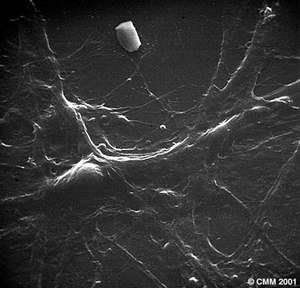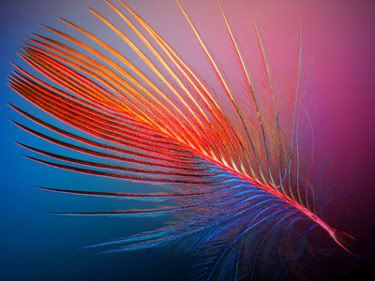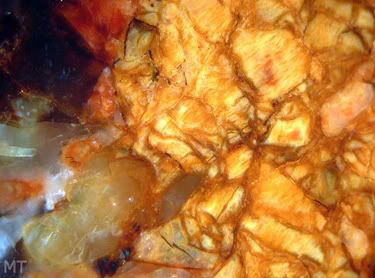Deep Deep Zooming

Neurons
[Microscopy by Dr. L. Blood]
I pursued nature to her hiding place.
--Mary Shelley, Frankenstein
Many things previously called chaos are now known to follow subtle fractal laws of behavior. So many things turned out to be fractal that the word "chaos" itself (in operational science) had redefined, or actually for the FIRST time Formally Defined as following inherently unpredictable yet generally deterministic rules based on nonlinear iterative equations. Fractals are unpredictable in specific details yet deterministic when viewed as a total pattern - in many ways this reflects what we observe in the small details and total pattern of life in all its physical and mental varieties, too.
--Patterns of Visual Math
I have always enjoyed seeing fractal patterns and forms come to light from exploring the smallest caverns of nature. And I thought it might be fun to take a short tour through a few galleries of microscopy.
The neural patterns seen in the above photograph I see regularly in programs like Sterling-ware. The XTALENT Image Gallery at Nanoworld, an Australian research site devoted to microscopy and microanalysis, includes a gallery of artistically modified work.

Feather of a Dominican Cardinal
[Microscopy by Ian C. Walker.]
The feather and fern forms in the image above have turned up for me in Vchira, Fractal Zplot, and Fractal Explorer. The image above was seen in the 2005 Nikon Small World photomicrography competition. The site contains extensive galleries of the competition's winning work going back to 1977.

Surface of the Petal of a Cowslip Flower
[Microscopy seen on Eye of Science]
The image above illustrates a self-similar replication I've sometimes encountered in XenoDream. Postwork in Bryce also produces a comparable effect. The image galleries at Eye of Science are comprehensive and include microscopy work of crystals, fungus, bacteria/viruses, and botanical structures.

Dhofer 019 (Meteorite)
[Image by Tom Phillips]
Ultra Fractal work, like that of Samuel Monnier, sometimes looks like the image above. Moreover, some glass and distortion Photoshop filters can produce corresponding effects. There are over 1000 stunning images to be seen in Tom Phillips' microscopic meteorite galleries.
Today's tour only scratches the surface of microscopy galleries found on the Net. Here are a few more to sample:
Molecular Expressions Photo Gallery
Olympus Microscopy Resource Center
Micrographia: A Light Microscopy Resource
Digital Image Galleries at the Light Microscope Forum (check out "Polarized Light")
Gallery at the TLL Microscopy and Imaging Facility
Microscopy Links on BioChemWeb.org
Sandgrains.com Galleries
Links at www.microscopy.info
Dennis Kunkel Microscopy, Inc.
Next time: Deep Deep Smashing!!
Tags: fractal, fractals, fractal art, fractal blog, microscopy, deep deep zooming, nanoworld, nikon small world, eye of science, tom phillips, shrink that sucker down, nature's hiding place, cruelanimal, orbit trap







